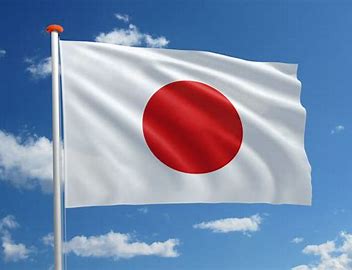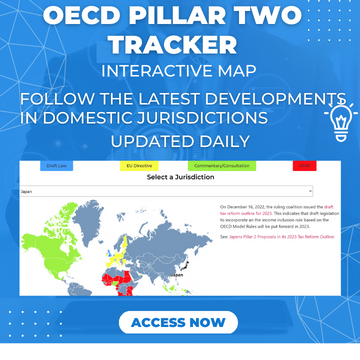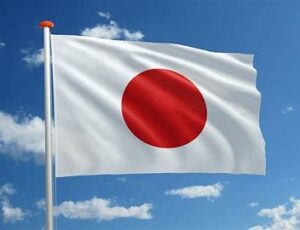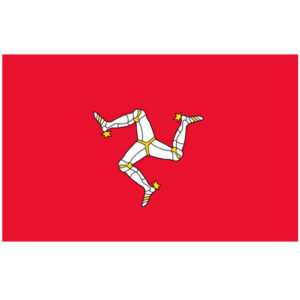Pillar Two GloBE Loss Election
This dispenses with the deferred tax expense and allows the MNE to establish a deemed deferred tax asset where there is a net Pillar Two GloBE loss for that jurisdiction. The deferred tax asset for the loss is equal to the net Pillar Two loss in the jurisdiction for a fiscal year, multiplied by the 15% minimum rate.
This operates in a similar way to the standard loss treatment for deferred tax purposes, and any amount of loss utilized in future years is treated as an addition to covered taxes for that year.
The Pillar Two GloBE loss deferred tax asset must be used in any subsequent fiscal year in which there is Pillar Two income for the jurisdiction at an amount equal to the lower of the net Pillar Two GloBE income, multiplied by the 15% minimum rate or the available amount of the Pillar Two GloBE loss deferred tax asset.
It is a jurisdictional election and is made in the first Pillar Two information return for the jurisdiction.
There are a number of cases when making a Pillar Two loss election would be beneficial. The most obvious case is when the jurisdiction does not levy a corporate income tax.
See our Pillar Two GloBE Loss Election – Interactive Tool.
Example 1
Company A is a member of an MNE group subject to Pillar Two. It is tax resident in the Bahamas, a jurisdiction that levies no corporate income tax.
It has estimated results as follows:
Year 1 – Trading Loss of (10,000,000 euros)
Year 2 – Trading Loss of (15,000,000 euros)
Year 3 – Trading Loss of (20,000,000 euros)
Year 4 – Trading Profit of 25,000,000 euros
Year 5 – Trading Profit of 10,000,000 euros
The financial accounts show no deferred tax asset for the loss given the jurisdiction does not levy corporate income tax.
In the absence of a Pillar Two GloBE loss election, in years 1-3, it would suffer no top-up tax liability given it is loss-making. In years 4 and 5, the top-up tax percentage would be 15%. As such, top-up tax of 3,750,000 euros in year 4 and 1,500,000 euros in year 5.
Note that there is no relief for the losses. This is because the Pillar Two GloBE rules do not adopt a general loss carry forward regime, but apply deferred tax from the financial statements, which would ordinarily pick up trading losses and provide for a deferred tax asset which would adjust the tax expense in the financial accounts. In this case, there is no deferred tax given there is no corporate income tax.
If a Pillar Two Loss deferred tax asset election was made, in year 1 a deemed deferred tax asset is created at the 15% global minimum rate (ie 1,500,000 euros).
This also applies to years 2 and 3. At the end of year 3, the deemed deferred tax asset is 6,750,000 euros.
In year 4, there is Pillar Two income of 25,000,000 euros. The deemed deferred tax asset is offset against this at the lower of:
The amount of the deemed deferred tax asset = 6,750,000 euros
Pillar Two GloBE income * 15% rate = 3,750,000 euros
As such, in year 4, Net Pillar Two GloBE Income is 25,000,000 euros.
Covered taxes are increased by the amount of deemed deferred tax asset used.
Therefore, covered taxes are 3,750,000 euros.
The Pillar Two GloBE ETR is 3,750,000/25,000,000 = 15%
In year 5, Pillar Two GloBE income is 10,000,000 euros. The deemed deferred tax asset used is 1,500,000 euros.
As such, the Pillar Two GloBE ETR is 15%.
In both years 4 and 5, making a Pillar Two GloBE loss deferred tax asset election has eliminated the top-up tax of 3,750,000 euros in year 4 and 1,500,000 euros in year 5.
Example 2
Let’s assume that the jurisdiction levied a corporate income tax rate of 10%. The facts are the same as above. The jurisdiction permits losses to be carried forward and offset against future taxable income.
The financial accounts would reflect deferred tax as follows:
Year 1 – (1,000,000)
Year 2 – (1,500,000)
Year 3 – (2,000,000)
Year 4 – 2,500,000
Year 5 – 1,000,000
In years 1 – 3 a deferred tax asset would be created each year based on the amount of the loss multiplied by the local tax rate (assuming of course it was expected that the losses could be offset in the future).
This would be a credit to the P&L tax expense (ie a negative expense which is effectively income).
Therefore, there would be a negative ETR and no top-up tax would be due.
In years 4 and 5, the deferred tax asset is released as the losses are utilized. This would be a debit to the P&L tax expense and represent additional tax. There would be no current tax expense in this case as the losses brought forward fully offset the taxable profits in years 4 and 5.
The net effect of this would be:
Year 4
Total Jurisdictional Tax = 2,500,000
Total jurisdictional Income = 25,000,000
ETR = 10.0000%
Top Up Tax Percentage =5.0000%
Top Up Tax = 1,250,000 euros
Year 5
Total Jurisdictional Tax = 1,000,000
Total jurisdictional Income = 10,000,000
ETR = 10.0000%
Top Up Tax Percentage =5.0000%
Top Up Tax = 500,000 euros
If a Pillar Two GloBE loss deferred tax election was made at the end of year 3, the deemed deferred tax asset would be 6,750,000 euros.
In year 4, there is Pillar Two GloBE income of 25,000,000 euros. The deemed deferred tax asset is offset against this at the lower of:
The amount of the deemed deferred tax asset = 6,750,000 euros
Pillar Two GloBE income * 15% rate = 3,750,000 euros
As such, in year 4, Net Pillar Two GloBE Income is 25,000,000 euros.
Covered taxes are increased by the amount of deemed deferred tax asset used.
Therefore, covered taxes are 3,750,000 euros.
The Pillar Two GloBE ETR is 3,750,000/25,000,000 = 15%
In year 5, Pillar Two GloBE income is 10,000,000 euros. The deemed deferred tax asset used is 1,500,000 euros.
The Pillar Two GloBE ETR is 15%.
This would therefore eliminate the potential top-up tax if no election was made.
The difference, in this case, arises as the Pillar Two GloBE loss election values the deemed deferred tax asset at the global minimum 15% tax rate. By contrast, the financial accounts use a 10% tax rate.
Company A could recast the deferred tax asset at the 15% minimum rate for Pillar Two GloBE tax purposes as it arises from a Pillar Two GloBE loss. This then reduces the deferred tax adjustment amount for Pillar Two GloBE purposes and the result would then be the same as if the Pillar Two GloBE loss election was made (ie there would be no top-up tax liability).
Foreign Tax Credits
Article 4.4.1(e) of the Pillar Two GloBE Rules provides that tax credits are generally excluded from the separate deferred tax computation for Pillar Two GloBE purposes. This includes foreign tax credits.
As such, where an excess foreign tax credit carry-forward is generated in a jurisdiction, the deferred tax asset that may be reflected in the financial accounts would not reduce covered taxes for Pillar Two GloBE purposes. Similarly, on a reversal of the deferred tax asset when the carry-forward is utilized, there would be no increase to covered tax for Pillar Two GloBE purposes.
The OECD Commentary clarifies the treatment of deferred tax assets that are not recognized because accounting recognition criteria have not been met. For instance, generally deferred tax assets are recognized where it is probable that taxable profit will be available against which the deductible temporary difference can be utilized (or a similar test applies).
Even if the requirements are not met for accounting recognition, a deemed deferred tax asset is created for Pillar Two GloBE purposes. In some cases, the deferred tax asset may not be recorded in the first place due to the criteria not being met.
Article 4.4.1(c) of the Pillar Two GloBE Rules provide for the generation of a deemed deferred tax asset in the year of a loss. If the deferred tax asset is subsequently recognized in the accounts, Article 4.4.2(c) of the Model Rules then disregards the generation of that deferred tax asset in subsequent years when the recognition criteria are met.
Loss Carry-Backs
The carryback of a loss to a previous year is taken into account for deferred tax purposes and a deemed deferred tax asset is created, just as it would be if there was a loss carry-forward.
The deemed deferred tax asset is also capped at the minimum 15% global minimum tax rate under Article 4.4.1 of the OECD Model Rules.
As with the creation of any deferred tax asset, this will reduce adjusted covered taxes in the year of creation given the effective accounting entry would be to:
Dr Deferred Tax Assets and Cr Deferred Tax Expense (if it had been processed through the accounts).
In the year the loss is carried back to, the deferred tax asset would be reversed which would increase adjusted covered taxes and be offset against the reduction in the current tax expense in the earlier year.
For instance, if a company incurred taxable income of 1 million euros in year 1 and suffered tax at 25%, it would pay corporate income tax of 250,000 euros.
If in year 2, it incurred a tax loss of 1 million euros, this would result in a deemed deferred tax asset of 150,000 euros (as the tax rate is recast to 15%), which would be a negative covered tax.
This is then carried back to year 1. The 250,000 euros tax paid is refunded due to the loss carry back, but the deferred tax asset is unwound resulting in adjusted covered tax of 150,000 euros.
Prior year decreases in covered taxes require a recalculation of the ETR and top-up tax in the previous year that the adjustment relates to. However, where a reduction is less than 1 million euros the MNE can elect for this to be adjusted in the current year. See Post-Filing Adjustments.















